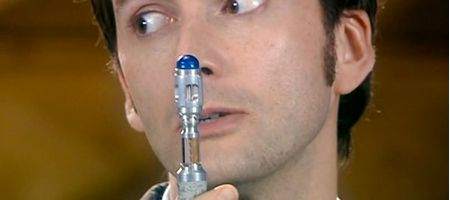Scottish physicists have built a real-life sonic screwdriver, like the one used by Doctor Who – and say it’s most likely to be used for surgery.

Using an ultrasound beam and equipment designed for MRI-guided surgery, they’ve successfully lifted and spun a free-floating 10 cm rubber disk.
The Dundee University researchers used energy from an ultrasound array to form a beam that can not only push away an object in its path but, by using a beam shaped like a helix or vortex, cause it to rotate.
“This experiment not only confirms a fundamental physics theory but also demonstrates a new level of control over ultrasound beams which can also be applied to non-invasive ultrasound surgery, targeted drug delivery and ultrasonic manipulation of cells,” says Dr Mike MacDonald.
The invention demonstrates the previously-unproved theory that the ratio of angular momentum to energy in a vortex beam is equal to the ratio of the number of intertwined helices to the frequency of the beam.
“For the first time, our experimental results confirm directly the validity of this fundamental theory,” says Dr Christine Demore. “Previously this ratio could only be assumed from theory as the angular momentum and power in a beam had only ever been measured independently.”
The ultrasound beam generated by the Dundee team looks much like the ‘double-helix’ structure of DNA but with many more twisted strands. It generates a rotating, angular component of momentum that can exert torque on an object.
The team’s successfully generated vortex beams that can levitate and spin the 90g disk, made of ultrasonic absorber, in water.
The sonic screwdriver has been developed as part of a British project called Sonotweezers, which aims to make ultrasonic manipulation much more dexterous, with applications in regenerative medicine, tissue engineering, developmental biology and physics.
It’s also part of the EU-funded Nanoporation project, which is examining the uses of ultrasound in targeted drug delivery and targeted cellular surgery.
“It is an area that has great potential for developing new surgical techniques, among other applications,” says MacDonald.
“Like Dr Who’s own device, our sonic screwdriver is capable of much more than just spinning things around.”
There’s a video of it in action, below.






